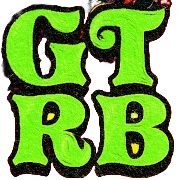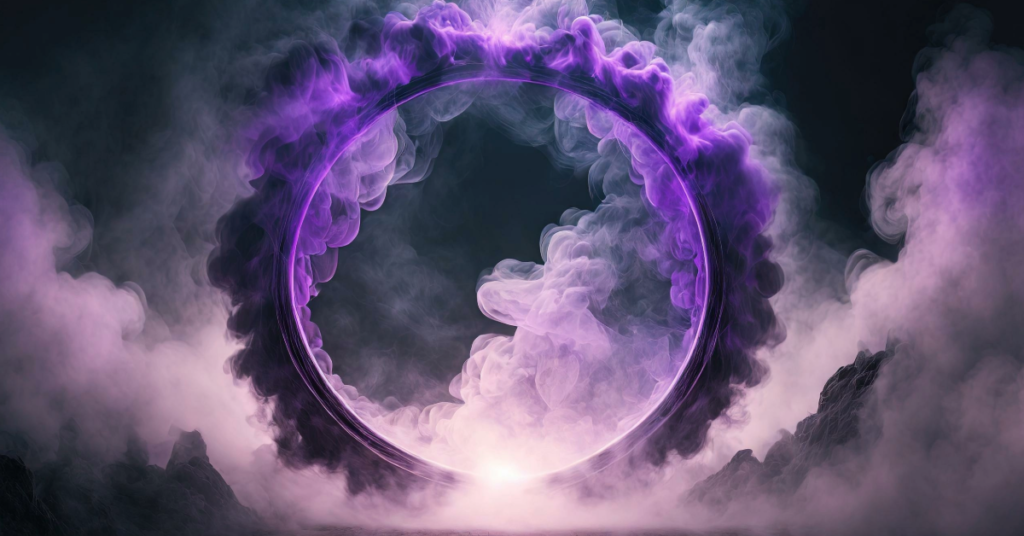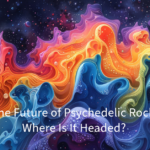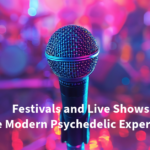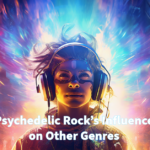The 1980s marked a new chapter for psychedelic rock. While the genre had largely faded from the mainstream by the end of the 1970s, its influence remained potent. A new generation of musicians, inspired by the sounds and ethos of the 1960s, began to explore and reinterpret psychedelic rock for a new era. These artists weren’t just looking to recreate the past; they were building on it, infusing the old psychedelic sounds with fresh ideas and modern sensibilities.
One of the first hints of this revival came in the form of neo-psychedelia, a genre that emerged in the late 1970s and early 1980s, blending the experimental nature of 1960s psychedelia with the punk and post-punk movements. This new wave of psychedelic rock would go on to influence a wide array of genres, from alternative rock to electronic music, leaving an indelible mark on the musical landscape of the late 20th and early 21st centuries.
Psychedelic Rock in the 1980s and 1990s
The 1980s saw the emergence of neo-psychedelia, a genre that drew heavily on the aesthetics and sounds of 1960s psychedelic rock while incorporating the edgier, more angular influences of punk and post-punk. Bands like The Teardrop Explodes, Echo & the Bunnymen, and Spacemen 3 were at the forefront of this movement, creating music that was atmospheric, surreal, and often drenched in reverb and delay effects.
The Flaming Lips, formed in 1983, became one of the most prominent bands in the neo-psychedelic movement. Their early work, characterized by experimental sounds and eccentric lyrics, paved the way for their later success in the 1990s and 2000s. Albums like The Soft Bulletin (1999) and Yoshimi Battles the Pink Robots (2002) blended psychedelic rock with elements of alternative rock, electronic music, and orchestral pop, creating a sound that was both nostalgic and forward-thinking.
In the 1990s, the British band Primal Scream released Screamadelica (1991), an album that fused rock, dance, and psychedelic influences to create a groundbreaking work that would come to define the era. The album’s use of sampling, electronic beats, and swirling guitar effects brought the psychedelic sound into the rave culture of the 1990s, introducing a new generation to the genre.
My Bloody Valentine, another key player in the 1990s, took the psychedelic rock aesthetic and pushed it to new extremes with their album Loveless (1991). The band’s use of layers of distorted guitars, ethereal vocals, and unconventional song structures created a sonic experience that was both overwhelming and hypnotic, echoing the immersive nature of 1960s psychedelia while carving out a space of its own.
Influence on Other Genres
Psychedelic rock’s influence can be seen in a wide array of genres that emerged in the 1980s, 1990s, and beyond. Shoegaze, a genre characterized by its dense layers of sound and introspective lyrics, owes a great deal to the psychedelic rock tradition. Bands like My Bloody Valentine, Slowdive, and Ride created music that was deeply atmospheric, using reverb, delay, and feedback to create immersive soundscapes that mirrored the hallucinatory effects of classic psychedelic rock.
Alternative rock bands like Radiohead also drew on psychedelic influences, particularly in their later work. Radiohead’s OK Computer (1997) and Kid A (2000) combined rock with electronic music, ambient textures, and abstract lyrics to create albums that were both innovative and deeply unsettling. The band’s willingness to experiment with sound and structure, as well as their exploration of themes like alienation and dystopia, placed them firmly within the psychedelic tradition.
Electronic music, too, has been deeply influenced by psychedelic rock. The rise of psychedelic trance, a genre that emerged in the 1990s, saw electronic producers like Infected Mushroom and Shpongle incorporating the hypnotic rhythms and swirling textures of psychedelic rock into their music. The genre’s emphasis on creating a transcendental, immersive experience through sound can be traced back to the psychedelic rock of the 1960s.
Modern Psychedelic Bands and Albums
The 21st century has seen a resurgence of interest in psychedelic rock, with a new wave of bands drawing inspiration from the genre’s rich history while bringing their own unique perspectives to the table. Tame Impala, led by Australian multi-instrumentalist Kevin Parker, is one of the most prominent examples. Tame Impala’s albums, including Lonerism (2012) and Currents (2015), blend the dreamy, swirling sounds of 1960s psychedelia with modern production techniques and introspective lyrics. The result is music that feels both timeless and distinctly contemporary.
MGMT, another key player in the modern psychedelic revival, burst onto the scene with their debut album Oracular Spectacular (2007). Tracks like “Time to Pretend” and “Electric Feel” combined catchy pop melodies with psychedelic textures, bringing the genre to a new, younger audience. Their follow-up albums, Congratulations (2010) and Little Dark Age (2018), continued to explore psychedelic themes, blending electronic elements with surreal lyrics and experimental sounds.
Animal Collective, known for their eclectic, genre-defying sound, have also been instrumental in keeping the spirit of psychedelic rock alive in the 21st century. Albums like Merriweather Post Pavilion (2009) and Strawberry Jam (2007) are filled with layers of sound, unconventional song structures, and a sense of exploration that harkens back to the genre’s roots.
Psychedelic Festivals and the Modern Scene
The influence of psychedelic rock is also evident in the rise of music festivals dedicated to the genre. Events like Desert Daze in California and Austin Psych Fest in Texas have become gathering places for fans of psychedelic music, old and new. These festivals feature a mix of classic acts from the 1960s and 1970s alongside modern bands carrying the psychedelic torch into the future.
Desert Daze, in particular, has become known for its immersive experiences, with art installations, light shows, and mind-expanding performances that capture the essence of what psychedelic rock has always been about—exploration, experimentation, and a sense of wonder.
The Everlasting Influence of Psychedelic Rock
Psychedelic rock may have had its heyday in the 1960s, but its influence has never truly faded. From the neo-psychedelia of the 1980s to the genre-blending experiments of the 1990s and the modern revival of the 21st century, the spirit of psychedelic rock continues to inspire and captivate musicians and listeners alike.
As we prepare to dive into the final part of this series, we’ll take a closer look at the instruments and technology that helped shape the psychedelic sound—a sound that remains as vibrant and influential today as it was over half a century ago.
